Have you ever considered comics to improve or learn Spanish?
Well, let me tell you if you haven’t, you should. Comics are a great way to access any language because they don’t have much text or long sentences and they show the current spoken language.
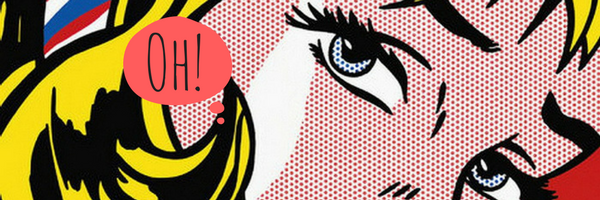
History of the comic in Spain
The history of the comic in Spain could date back to the XIII century depending on what we consider comic or the Spanish equivalent word: “historieta“ (comic strip, cartoon).
Some people would consider the Cantigas de Santa María, the first comic manifestation as they are an ingenious combination of words, music, and visual art. The are a collection of over four hundred sacred Galician-Portuguese songs composed, according to tradition, by Alfonso X, known as “El Sabio,” King of Castile and León (1252–1284). The Cantigas de Santa María is a monumental achievement in vernacular lyric and book art.
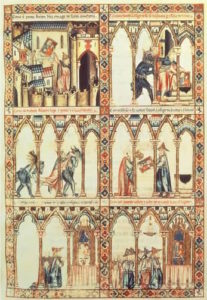
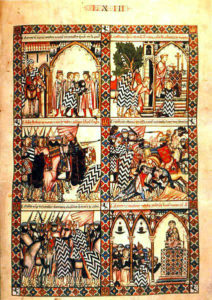
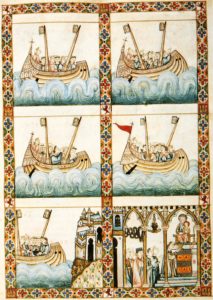
They look like a very old comic, don’t they?
But some others believe that the comic or historieta is the cultural product of the modern industrial era and the occidental politics. They affirm that comic was born and evolved in parallel to the written press as the first means of communication to the masses. This is why those search for the first comic manifestation in the press.
So, the first historieta in the Spanish press was by the Spaniard, settled in Cuba, Victor Patricio Landaluze and his “Historia de las desgracias de un hombre afortunado” (1857).
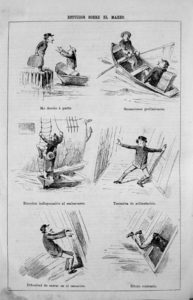
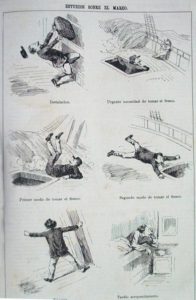
At the beginning of the XX century we have the appearance of children’s magazines where we can highlight the magazine TBO (1917), which the one which became so mainstream that ended giving the name to that medium in Spain (el tebeo: ‘comic’ or ‘comic book’).
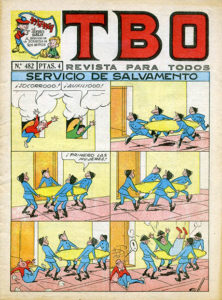
There was the adventure comic (tebeo de aventuras) inspired in the American comic and Hollywood movies, like Chicos.
Around that time, the comic book (cuaderno de aventuras) appeared with the famous “Roberto Alcázar y Pedrin” o “El guerrero del antifaz”.
During the post-war period (Spanish Civil War, 1936-1939) comic becomes the most popular medium in the country enjoying its golden age.
It was a cheap read that was consumed by the popular classes and the member of those popular classes would be the ones who would become the professionals of the comics in the following years.
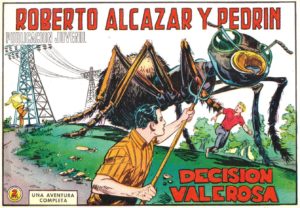


Regarding the humoristic comic (tebeo humorístico) we have to mention “Pulgarcito“, “Jaimito” and authors like Escobar, Enrich o Ibáñez.
All of them are members of the “Escuela Bruguera” which reflects the reality of the country through a nonsensical, exaggerated and grotesque filter (filtro esperpéntico).
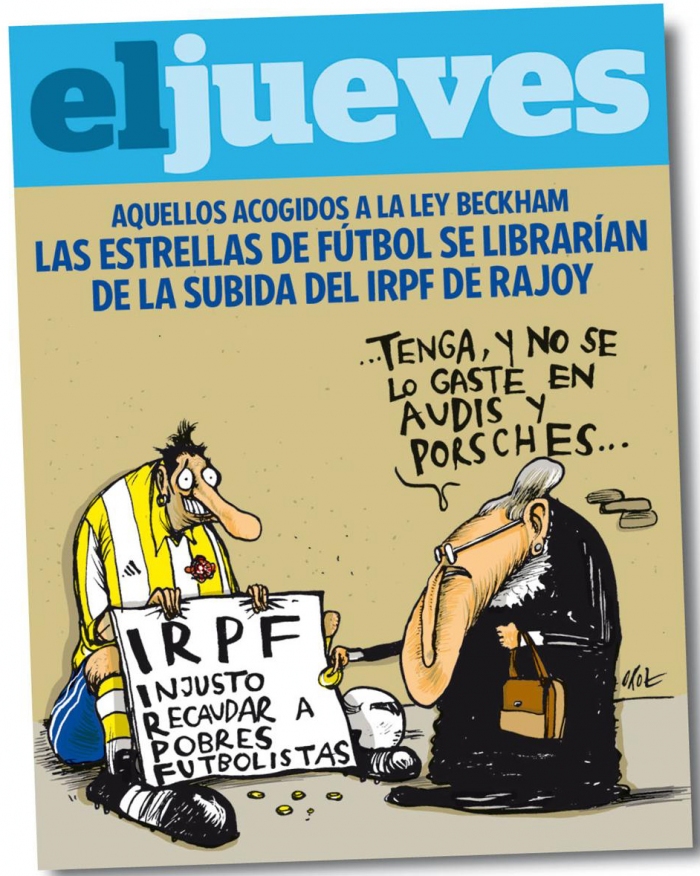

The comic for adults experienced a boom from 1967 until 1986 with terror comic, satire and underground comix. We see protest and a cultural rethink.
The moment of highest splendour will happen after Franco’s death which will see the birth of magazines like “El Jueves“.
New illustrators will gain success and comics like Paracuellos, Makinavaja or Superlópez will remain in the history of the comic in Spain.
Comic in Spain today
The comic industry is still quite small in Spain compared with the leadership in Europe of the Franco-Belge comic and the Japanese and North American.
Even though the readers still prefer to read the translations of the Marvel comics or other international publications, the Spanish illustrators are making the most of Internet by using social media, blogs and Tumblr as a way to find their audience.
Some of them have crossed national frontiers and occupy the international stage. To mention just three:
David Aja is a Spanish comic book artist, best known for his work on The Immortal Iron Fist and Hawkeye.
Winner of the Eisner Award in 2013 as the “Best Penciller/Inker,” and “Best Cover Artist” and also in 2014 “Best Cover Artist.” Hawkeye #11, by Matt Fraction and Aja, won “Best Single Issue (Or One Shot)”.
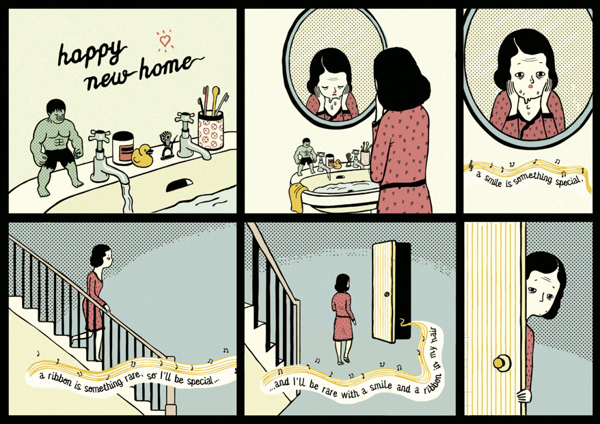
Emma Rios is a Spanish comics artist, writer, and editor with an international presence in the comics industry. She has worked for some of the largest American comics publishers, including Marvel.
Currently, she is working on several ongoing titles: Mirror with Malaysian artist Hwei Lim and Pretty Deadly with American writer Kelly Sue Deconnick. The latter of which earned Ríos an Eisner award nomination for “Best Penciller/Inker/Artist”, her second.
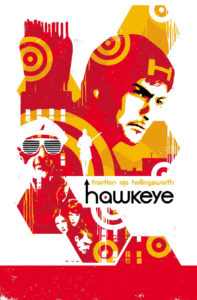
Ana Galvañ is an illustrator and a comic creator.
Her work has appeared in publications coordinated by Fantagraphics, Nobrow, Ultrarradio, Vertigo DC, Off Life, Autsáider, Apa-Apa, Fosfatina and Tik Tok. She was also a participant in Vertigo Quarterly: CMYK #4: Black.
Recently, she has published the fanzine Más allá del arco Iris [Beyond the rainbow] and Luz Verdadera [True Light].
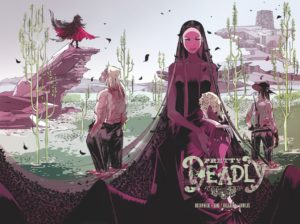
Is comic art?
Is comic art or is it literature? Is it both or none of them?
There is a combination of a script and image that makes it difficult to pinpoint, but also makes it obvious to place it as an art manifestation.


